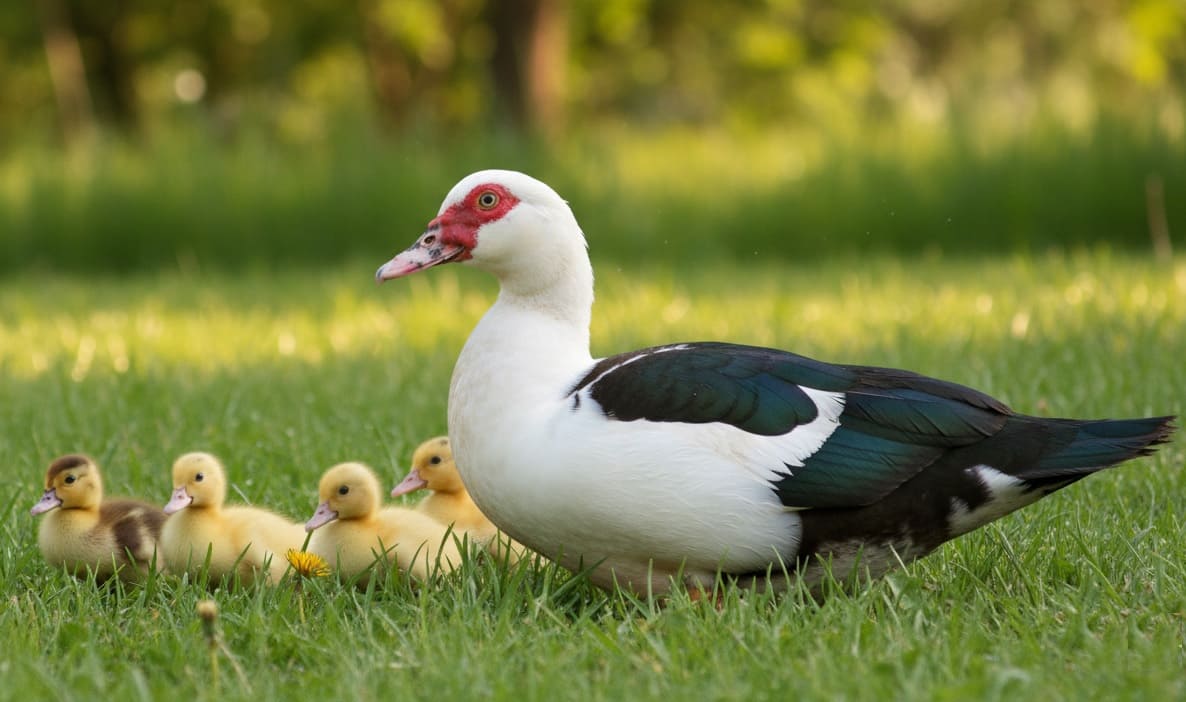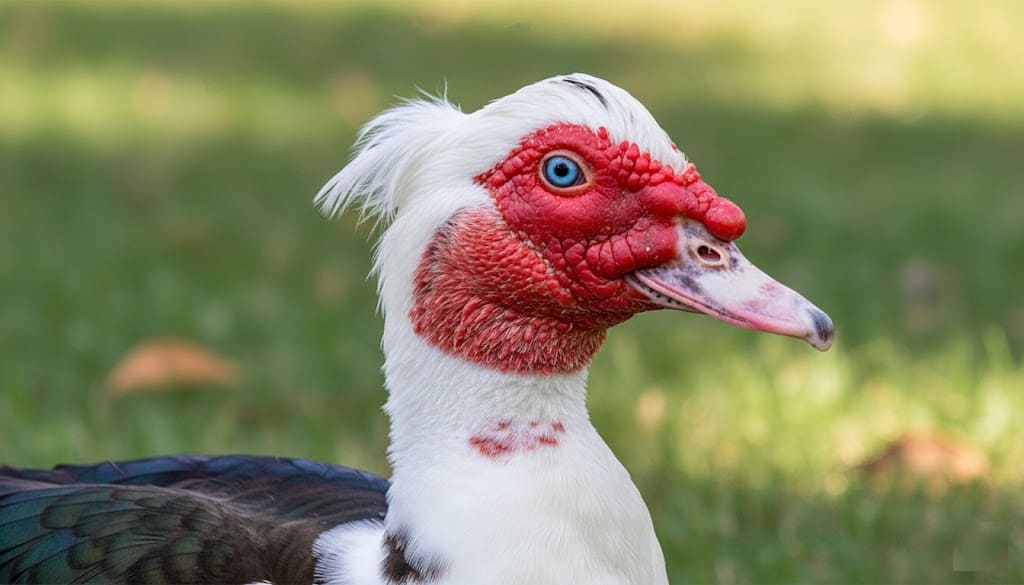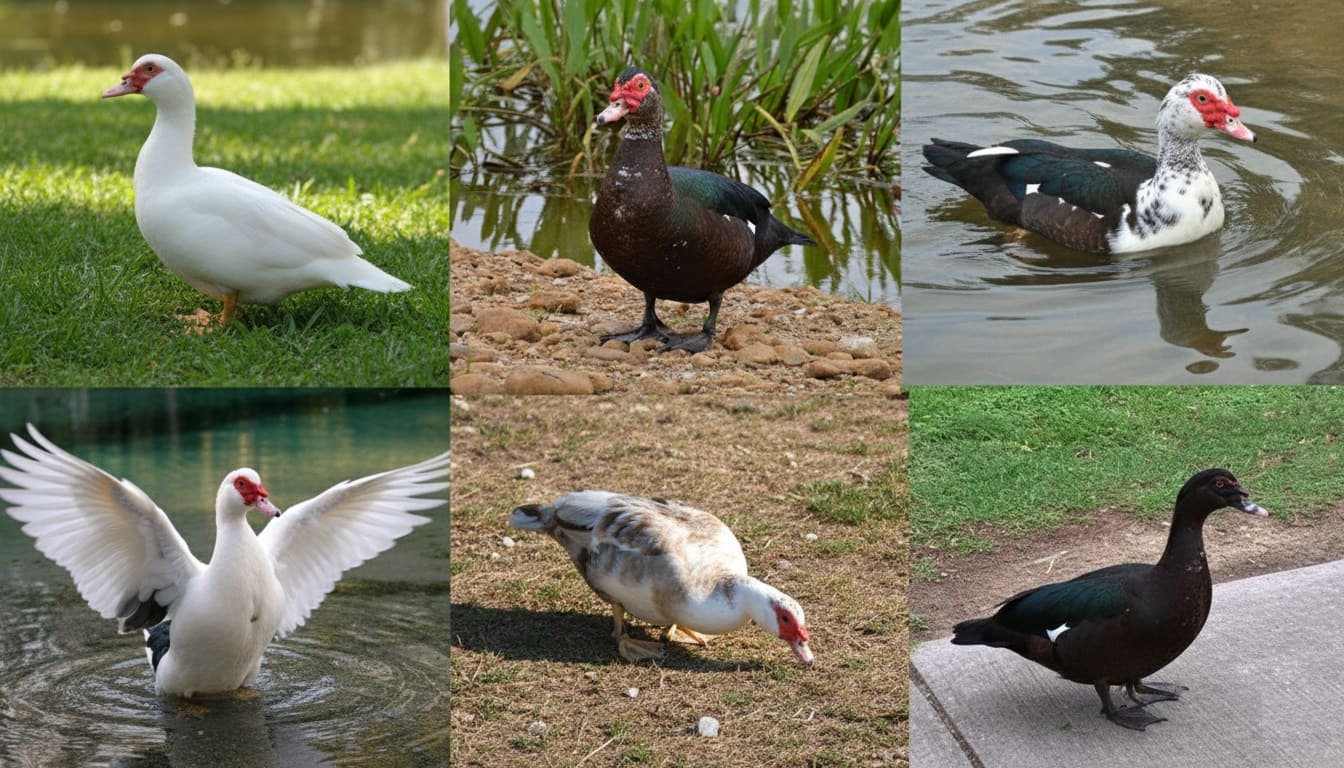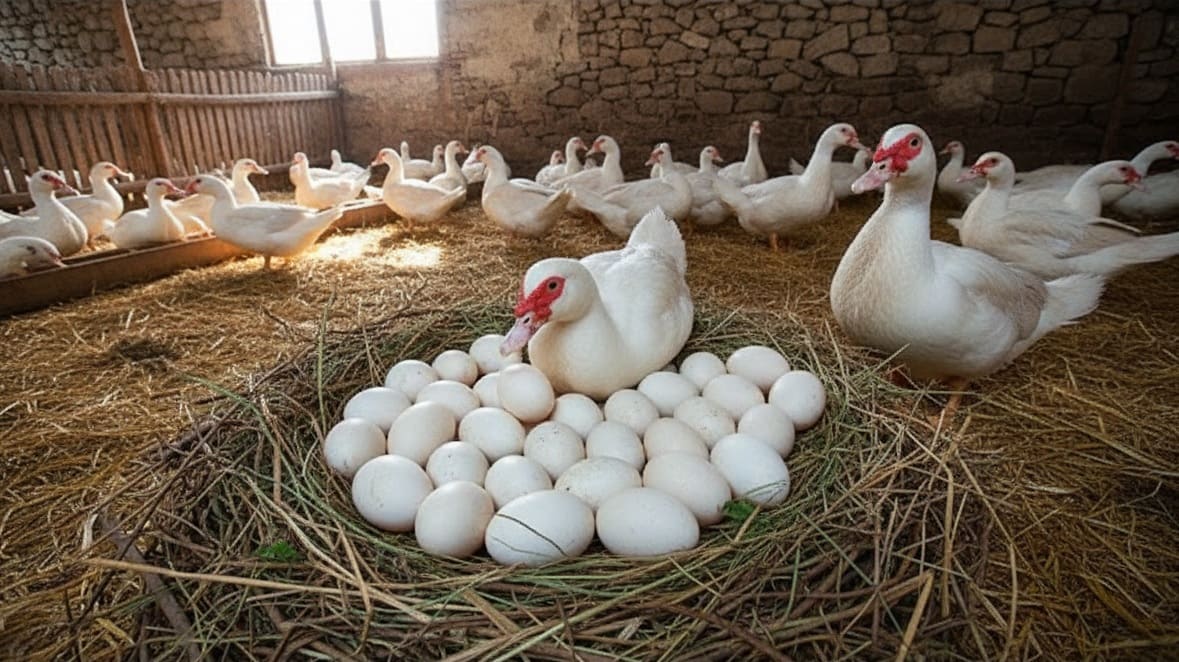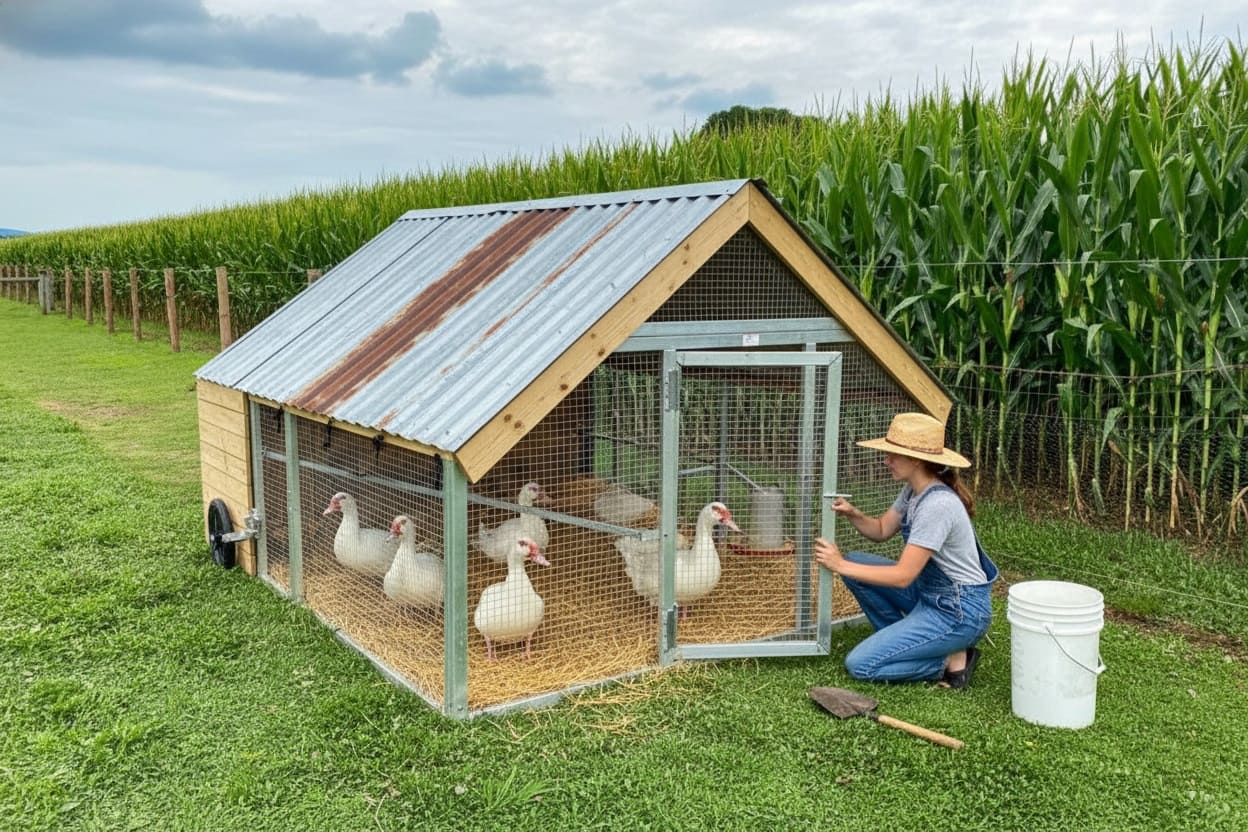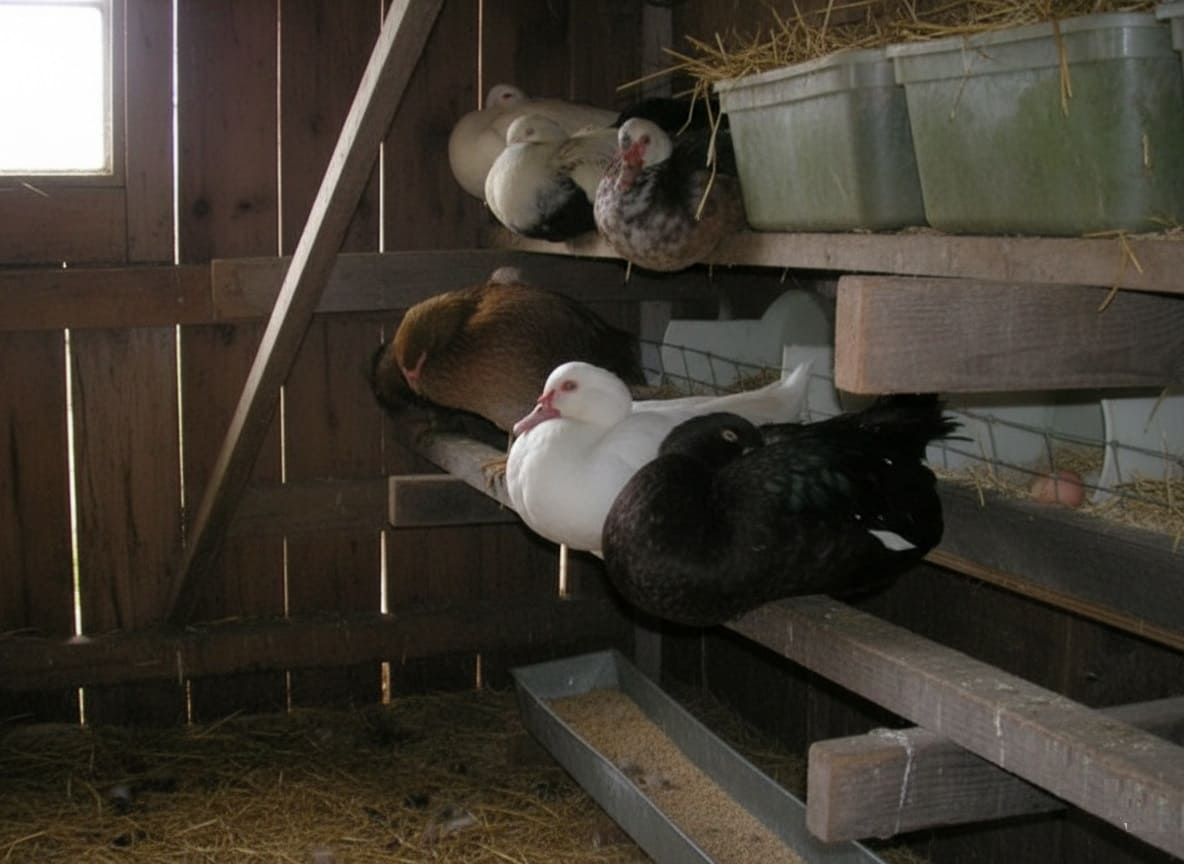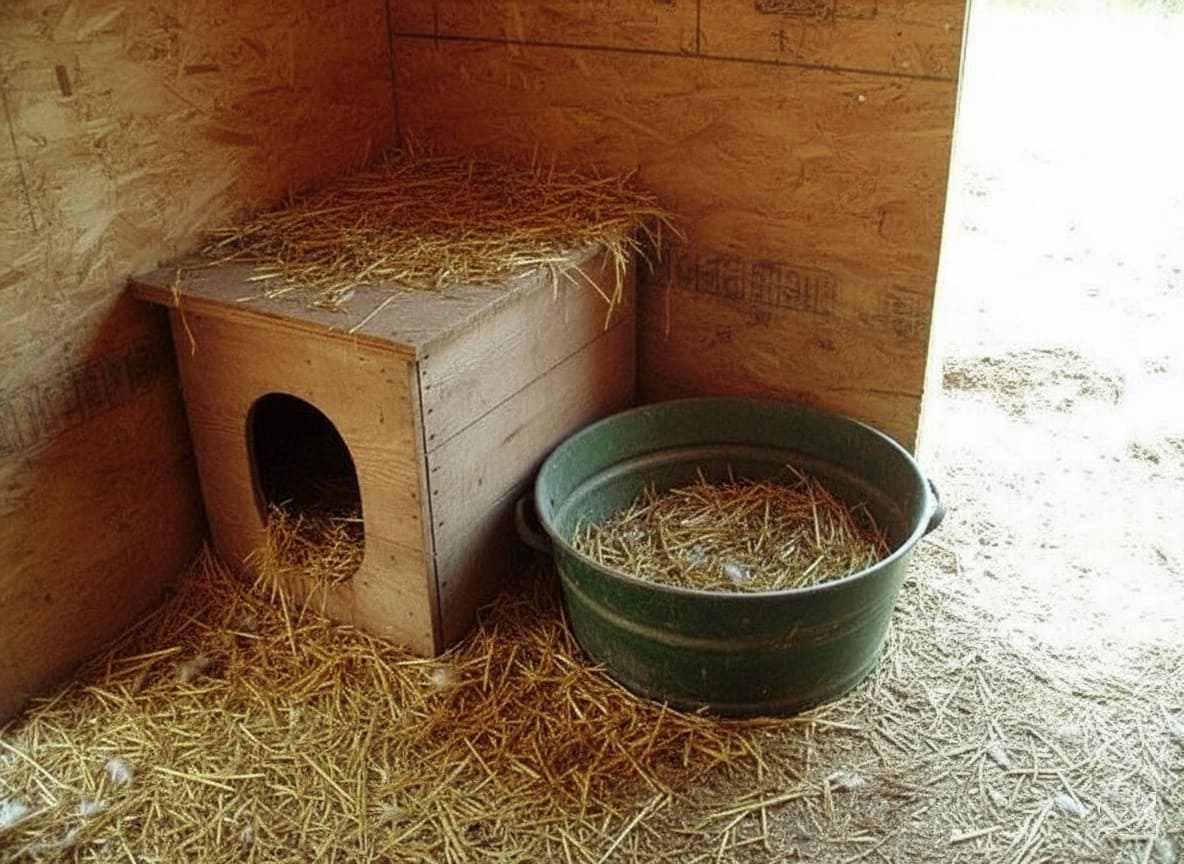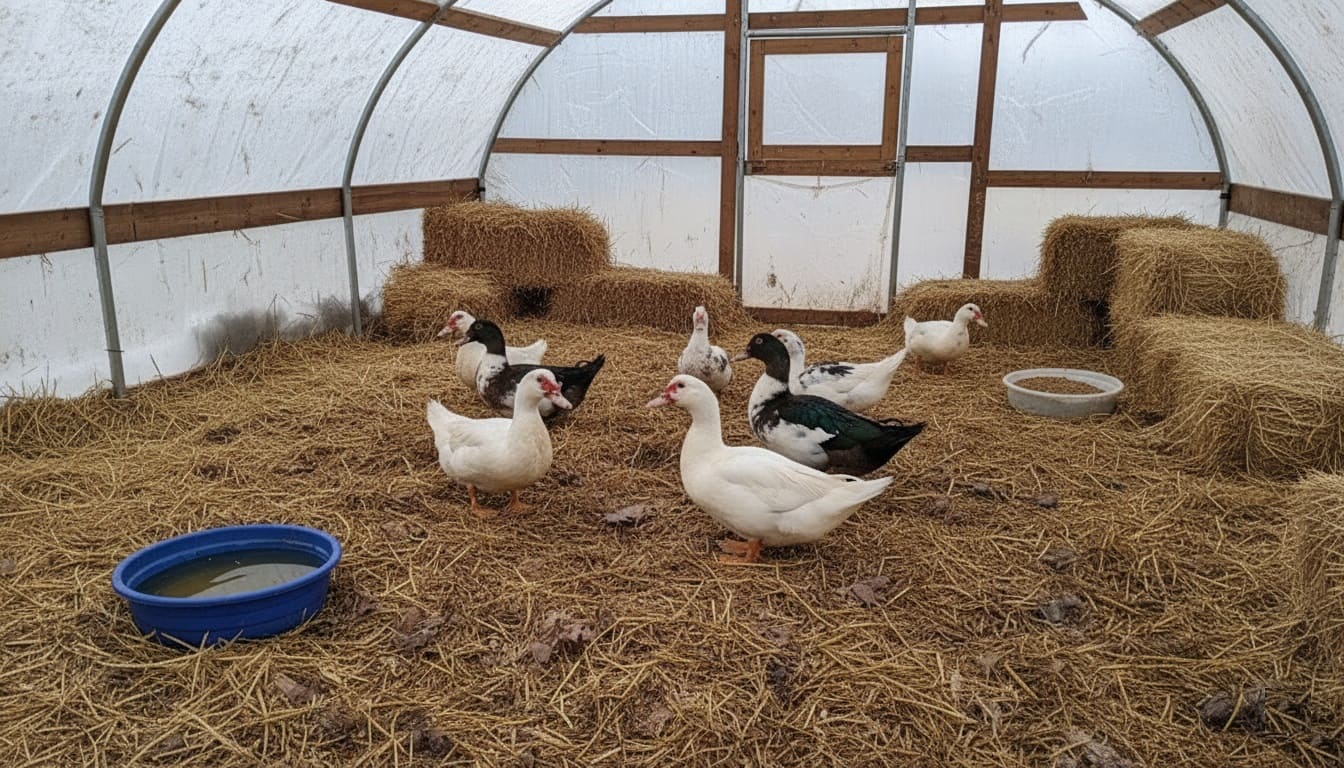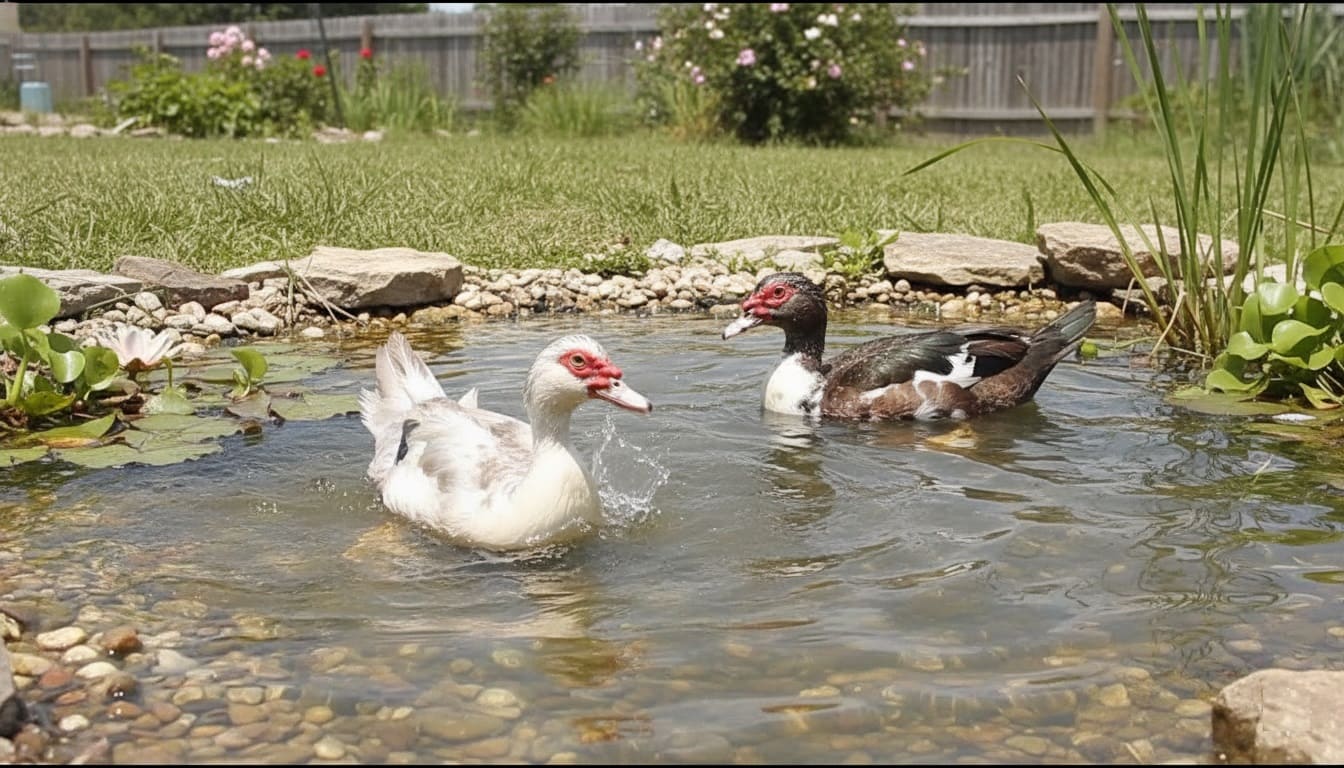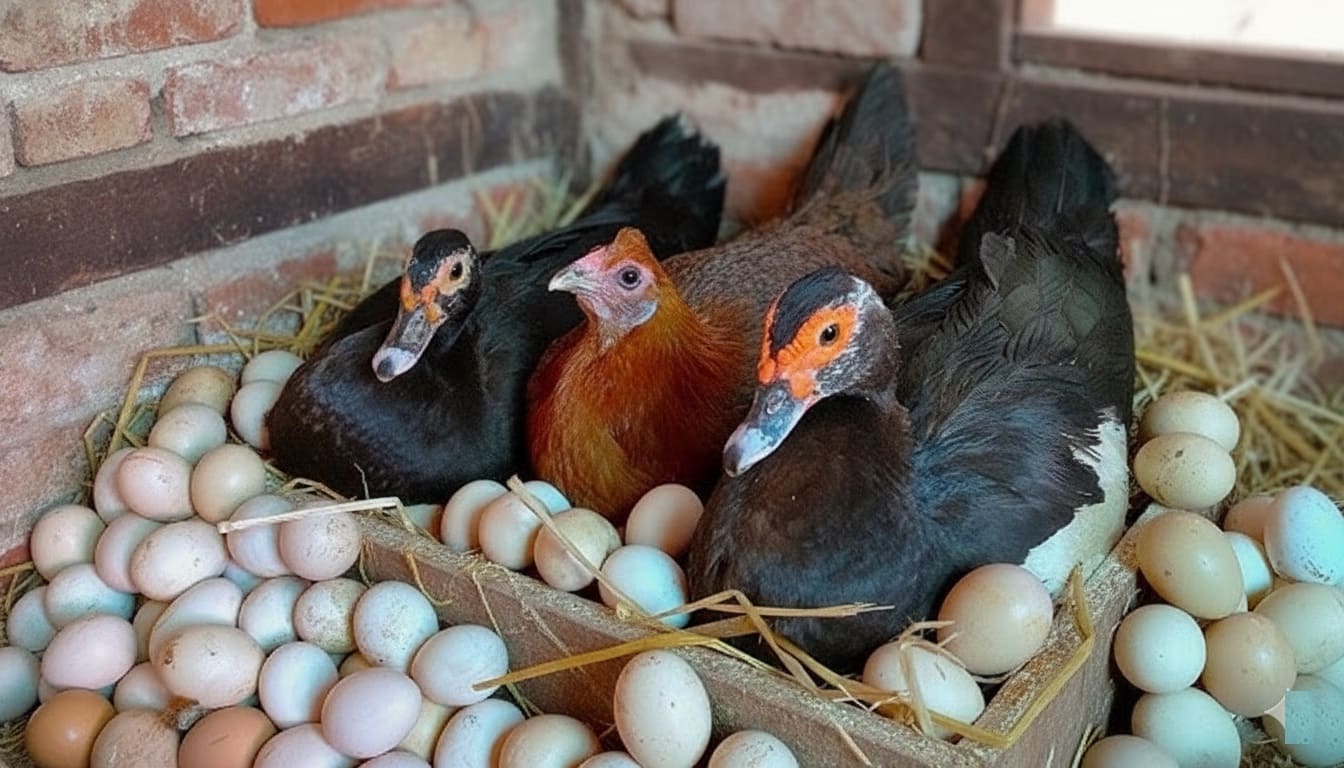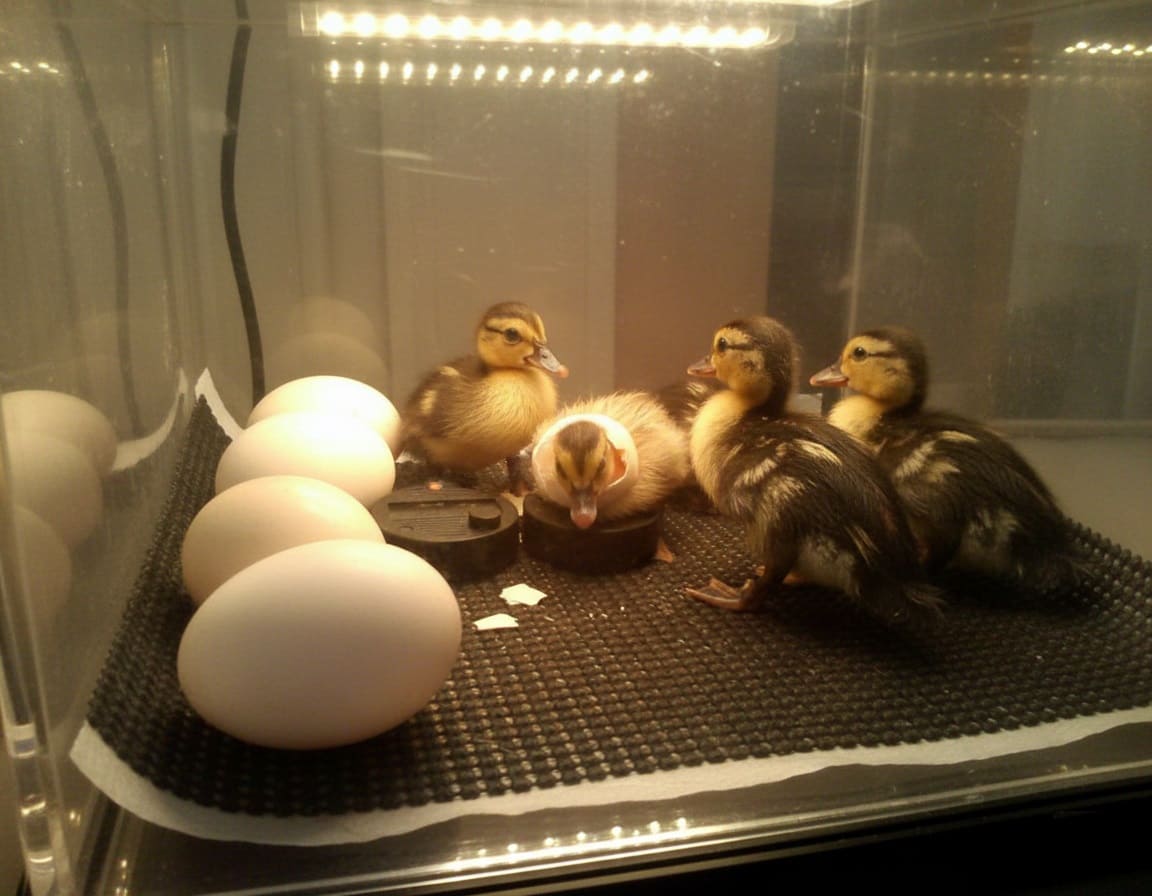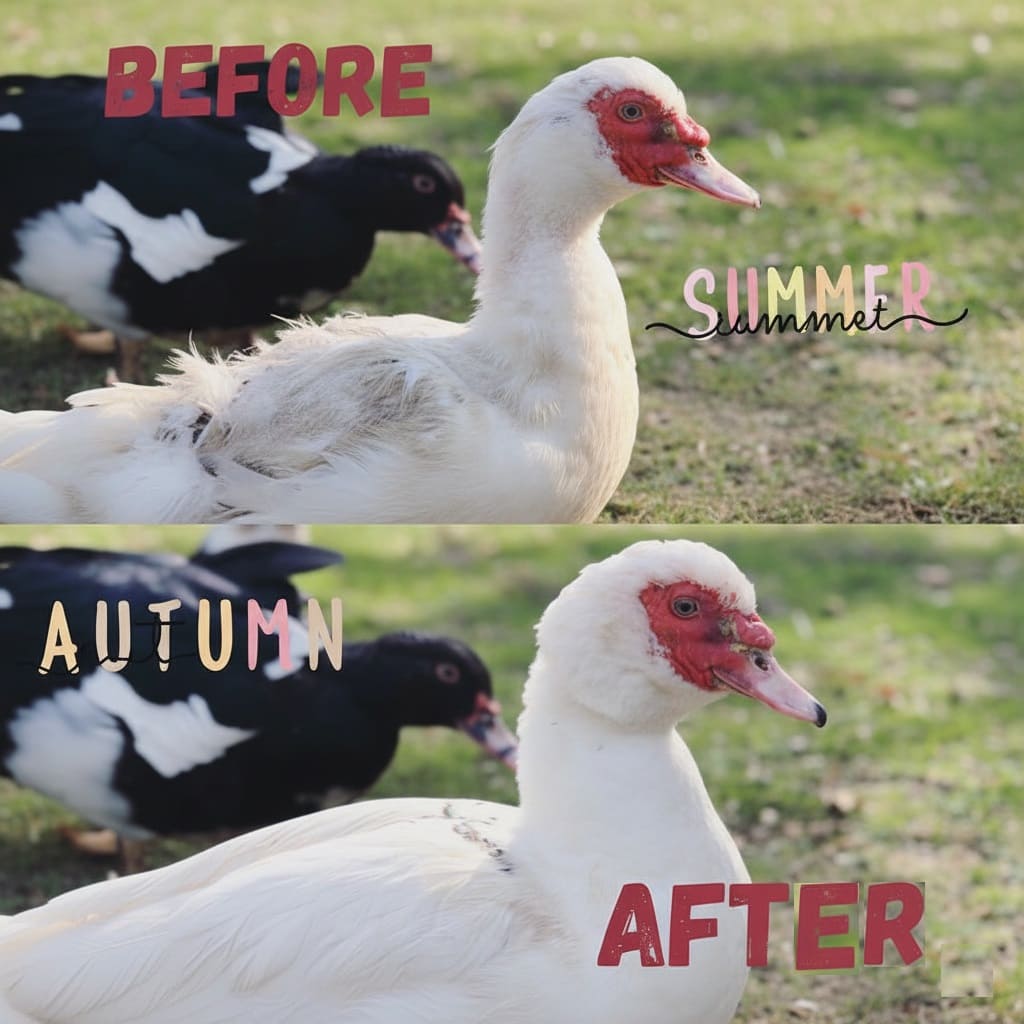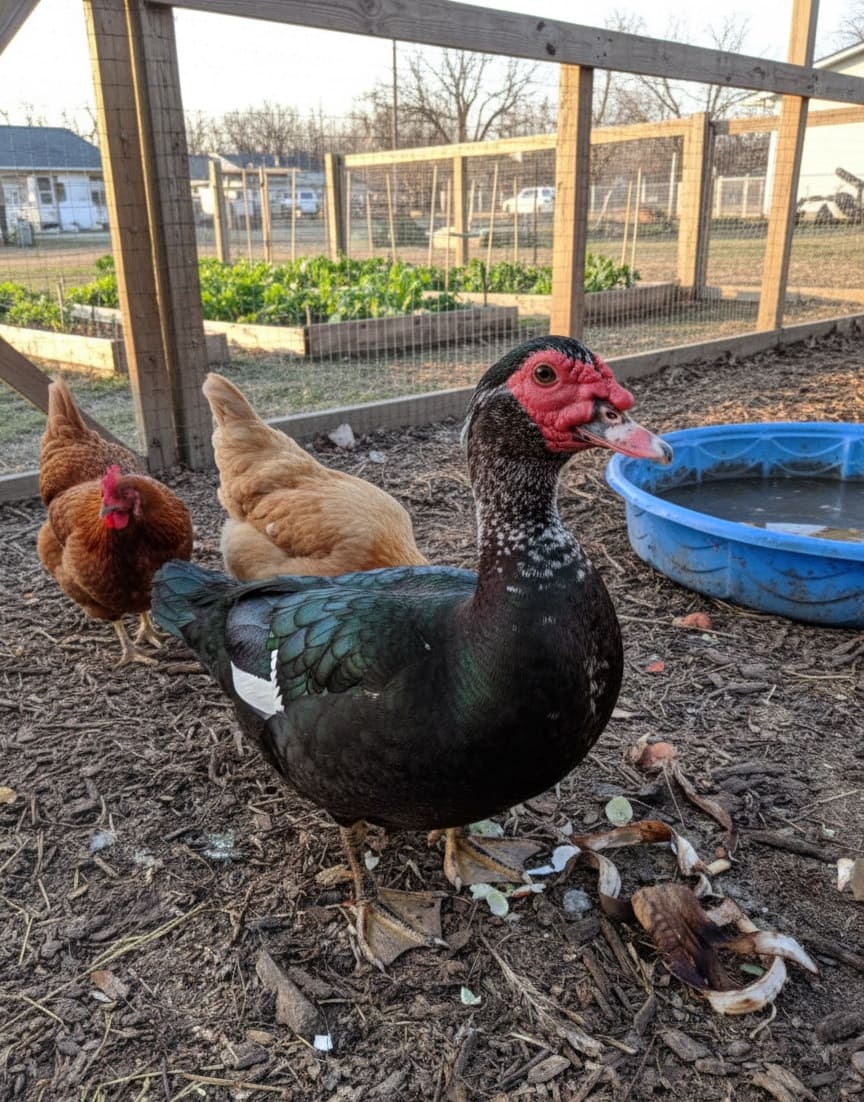Picture this: you’re standing in your backyard at dusk, expecting the usual mosquito assault, but instead you’re watching a group of large, peculiar-looking birds quietly hunting down every flying pest in sight.
Their heads bob like heat-seeking missiles as they snap mosquitoes from the air. One waddles over to greet you, tail wagging like an enthusiastic puppy. Welcome to life with Muscovy ducks—the waterfowl that breaks all the rules.
If you’re exploring duck breeds for your homestead or backyard flock, Muscovy ducks deserve serious consideration.
These unique birds offer a compelling combination of quiet temperament, outstanding pest control, substantial eggs, and lean meat—all while requiring less maintenance than many other poultry options.
This guide provides everything you need to know about successfully raising Muscovy ducks, from their quirky characteristics to practical day-to-day care and troubleshooting common challenges.
What Makes Muscovy Ducks Different From All Other Ducks
Here’s the first surprise: Muscovy ducks aren’t really ducks at all—at least not in the way every other domestic duck breed is.
While all other domestic ducks descend from the wild Mallard (Anas platyrhynchos), Muscovies belong to an entirely different species: Cairina moschata.
This genetic difference means crossing a Muscovy with a Pekin or Rouen produces sterile “Mulard” offspring, similar to mules from horses and donkeys.
Native to Mexico, Central, and South America, Muscovy ducks were domesticated by indigenous peoples centuries before Columbus arrived—archaeological evidence dates back to at least the 10th century.
Despite tropical origins, they’ve proven remarkably adaptable, thriving in temperatures as cold as 10°F. Today you’ll find them worldwide, from Texas homesteads to Canadian farms.
The name “Muscovy” likely comes from the Muscovy Trading Company that shipped them to Europe in the 1500s, though the etymology remains somewhat mysterious since these ducks have no connection to Moscow or Russia.
The Distinctive Muscovy Appearance
Size and Sexual Dimorphism
Muscovies are heavyweight ducks. Mature drakes reach 10 to 15 pounds and measure 30 to 34 inches long with impressive 54 to 64-inch wingspans. Females are roughly half that size at 6 to 7 pounds and 25 inches long.
This dramatic size difference makes sexing adults straightforward, though ducklings require careful observation of subtle features like foot thickness and chest-to-tail proportions.
The Signature Face
The most striking feature is the Muscovy’s face, adorned with red, warty-looking growths called caruncles surrounding the eyes and bill. Males develop these much more prominently than females, who maintain a more modest, masquerade-mask appearance.
Drakes also sport a distinctive knob at the bill base and an erectile crest of feathers they raise when excited or displaying.
Color Varieties
While wild Muscovies are glossy black with iridescent green or purple sheens and white wing patches, domesticated birds come in stunning variety: Black, Blue, Chocolate, White, Lavender, Bronze, Pied (white mixed with other colors), Barred, and Ripple patterns.
The American Poultry Association recognizes Black, Blue, Chocolate, and White varieties.
Functional Features
Muscovy feet combine webbing for swimming with long, sharp claws for gripping branches—they’re natural tree-roosters. This dual functionality reflects their wild heritage of foraging in water while roosting in trees at night.
Handle with gloves when necessary, as those claws can deliver impressive scratches.
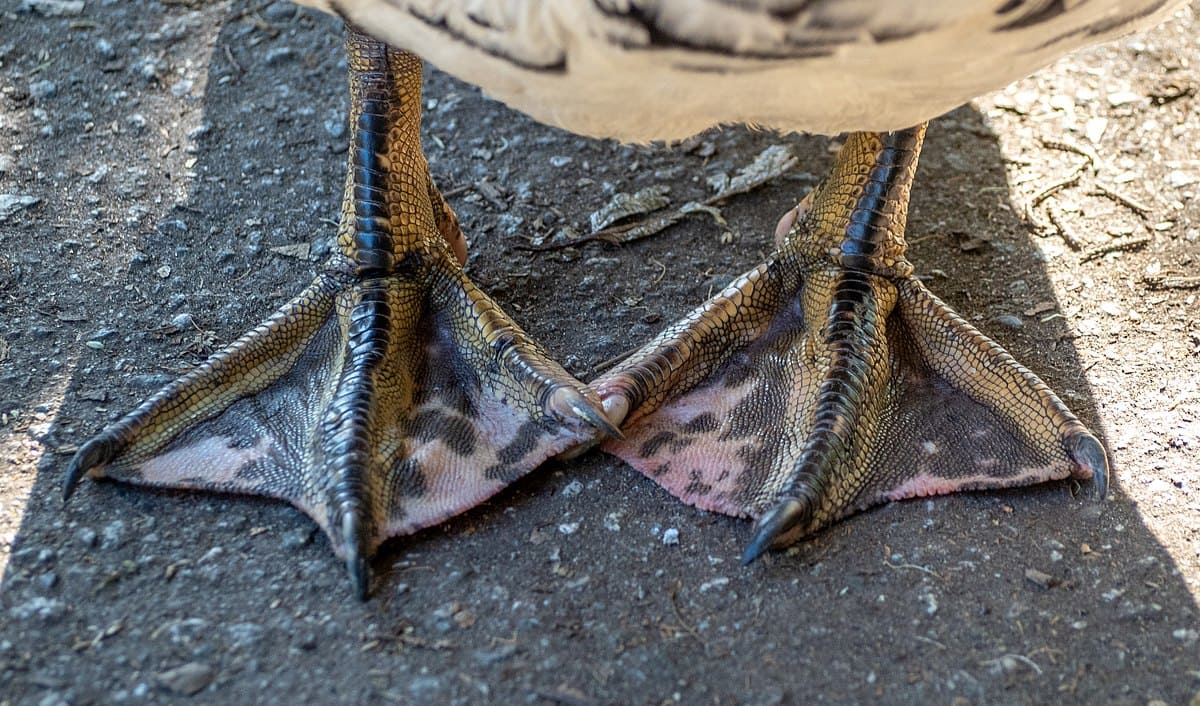
Why Homesteaders Choose Muscovy Ducks
Silent Neighbors: The Quiet Advantage
The single most appreciated trait is their near-silence. Females make soft trilling coos that sound dove-like, while males produce low, breathy hissing.
Unlike standard ducks whose quacking can penetrate walls and travel blocks, Muscovies won’t disturb neighbors or keep you awake. They only vocalize loudly when genuinely threatened.
Elite Pest Control
Watching Muscovies hunt is genuinely entertaining. They lower their heads in focused stalking mode, then snap their bills on unsuspecting insects. Their prey includes:
Mosquitoes and their larvae, flies of all types, ticks (they’ll pick them off you while you garden), grasshoppers, crickets, termites, slugs & snails, spiders, gypsy moth caterpillars, and remarkably—mice.
Multiple keepers report watching their Muscovies hunt and consume small rodents with the same enthusiasm shown for insects.
Keepers consistently report dramatic mosquito reductions once their flock begins foraging. In mosquito-heavy areas near water, Muscovies can transform yards from unpleasant to enjoyable by dusk.
👉 Here’s How to Use Goldfish for Mosquito Control in Rain Barrels
Eggs: Quality Over Quantity
Muscovies lay 60 to 195 eggs annually—modest compared to Khaki Campbells’ 300, but what eggs they produce. At 2.7 to 3 ounces each, they dwarf chicken eggs.
The massive yolks and higher albumen content make them exceptional for baking—cakes rise higher, pastries achieve better texture, meringues whip up beautifully. Double-yolkers are common, especially in young layers.
Perhaps most appealingly, Muscovy hens lay productively for 5 to 6 years versus chickens’ typical 2 to 3 years, making them excellent long-term investments without the ethical dilemma of culling spent layers.
Premium Lean Meat
Muscovy breast meat is genuinely unique—98% fat-free with flavor compared to veal or sirloin steak. It’s darker and richer than chicken or turkey, with mild gaminess most find appealing.
The French, who consume duck extensively, use Muscovies for 90% of their production. In fine dining, Muscovy breast appears as “magret” served medium-rare.
The trade-off? They grow slower than Pekins (3 to 4 months versus 7 to 8 weeks) and consume more total feed.
But for homesteaders prioritizing quality over speed, that slower growth produces superior texture and flavor. Mature drakes yield 10 to 12 pounds dressed; hens provide 6 to 8 pounds.
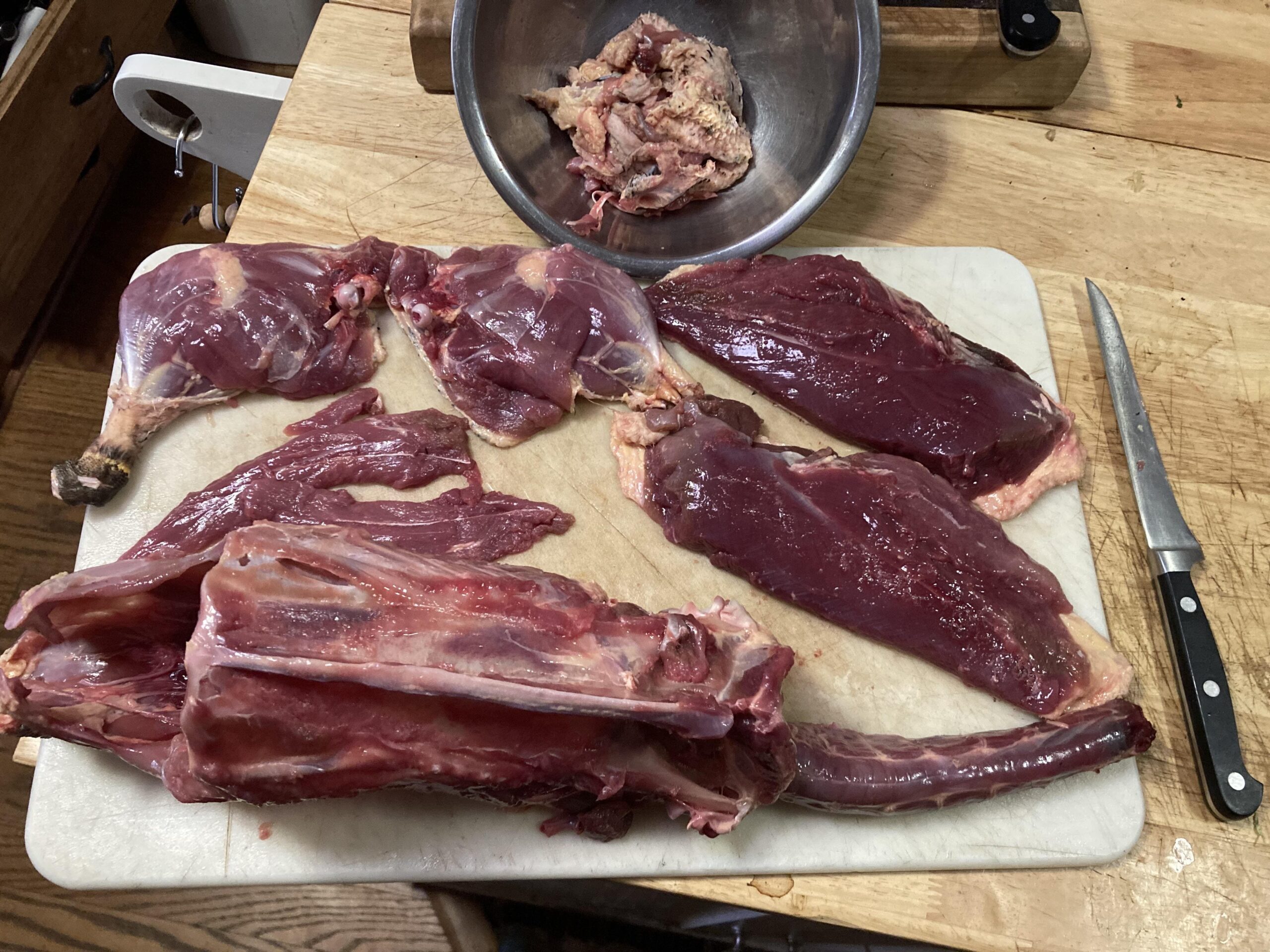
Additional Advantages
- Hardy Constitution: They handle both heat and cold remarkably well, with minimal disease susceptibility compared to chickens. Their only cold-weather vulnerability is frostbite on caruncles during extreme cold.
- Feed Efficiency: Given adequate space, they find much of their own food through foraging, particularly during growing seasons when keepers report minimal feed consumption.
- Excellent Mothers: Broody hens reliably hatch and raise multiple clutches of 10 to 16 ducklings annually, eliminating incubator needs.
- Easy Management: They herd cohesively unlike chickens that scatter in all directions, and integrate new members more peacefully.
Understanding Muscovy Behavior
Temperament Reality Check
Muscovies exhibit calm, docile temperaments while foraging—they move methodically without chickens’ frantic energy.
However, they’re not typically lap ducks or pets that enjoy petting. While they’ll follow you around hopefully (especially near feeding time) and wag their tails enthusiastically when excited, most maintain respectful distance once mature.
Many keepers report friendly ducklings transforming into hands-off adults seemingly overnight.
This appears largely genetic and individual. Some lines produce friendlier birds, but don’t expect cuddle sessions. If you want affectionate waterfowl, other breeds suit better.
Drake Behavior Spectrum
Male behavior varies from calm to territorial. During breeding season (spring and summer), drakes compete through raised crests, hissing, chasing, mounting, and feather-pulling.
These fights rarely cause serious injury but can be intense. Maintaining proper ratios—one drake per 3 to 5 females—minimizes male-male conflict.
Some drakes challenge humans for dominance through hissing, charging, or ankle-biting. Address this by asserting dominance: pick up the drake and hold him firmly (he’ll hate it but won’t be harmed), or otherwise make clear you’re in charge.
Consistency matters, as drakes who successfully challenge you will escalate. Cull genuinely aggressive individuals, as temperament is often genetic.
Maternal Excellence
Broody hens become fiercely protective—fluffing up, hissing, and even charging if you approach nests.
Once ducklings arrive, mothers teach foraging, provide warmth, and defend against threats for 10 to 12 weeks. Drakes sometimes participate in family protection, though involvement varies.
Flying Capability
Muscovies genuinely fly—females especially. Mature drakes often struggle due to weight, but manage short distances and can reach roofs or low trees. Females fly easily and powerfully over considerable distances.
Either accept this (most birds remain loyal to home) or clip flight feathers on one wing annually after molts. Your choice depends on whether wandering concerns you and your property setup.
Housing Requirements and Setup
Space Allocations
Muscovies need room:
- Coop: 6 to 7 square feet per duck inside
- Run: Minimum 15 to 20 square feet per duck if enclosed
- Free Range: Quarter acre or more for small flocks to truly thrive
Cramped conditions cause stress, fighting, and health problems.
The Perching Imperative
Unlike typical ducks, Muscovies need elevated perches or roosting bars like chickens. They’re uncomfortable sleeping on the ground, preferring to roost 2 to 6 feet up.
Install sturdy branches or 2×4 boards set wide-side-up at varying heights, spaced so ducks aren’t directly above each other.
This preference makes repurposing chicken coops easy and facilitates mixed-species housing.
Nesting Areas
Provide elevated nest boxes roughly 18 inches square by 24 inches tall. Some hens co-nest, so having extra-large 2-foot-square boxes allows sisterly sharing.
Expect hens to ignore your carefully prepared boxes and nest in random spots—bushes, under sheds, creative corners. They have strong opinions about nest placement.
Ventilation and Predator Protection
Position ventilation openings high where warm, moist air exits naturally while keeping drafts off roosting ducks. Adjustable vents allow seasonal control.
Essential predator-proofing includes:
- Hardware cloth (not chicken wire) on all openings—use 1/2-inch mesh
- Raccoon-proof locks (carabiner clips or specialized latches)
- Buried barriers extending 12 inches down or 2 feet outward
- Solid roof or overhead netting against hawks
- Automatic doors ensuring dusk lockup even when you’re away
Free-ranging increases predator risk significantly. Weigh this against benefits based on your predator pressure and risk tolerance.
👉 Read the Ultimate Guide to Protecting Your Backyard Chickens from Predators
Bedding Management
Deep litter method works excellently. Start with 4 to 6 inches of absorbent bedding (pine shavings, straw, or hemp), add fresh layers as it gets soiled, and clean out completely once or twice yearly.
The bedding composts in place, generating winter warmth while absorbing moisture. The result makes excellent garden mulch.
Water Needs: Finding the Balance
Muscovies don’t need ponds—their underdeveloped oil glands mean they swim less than Mallard-derived ducks. However, they still require:
- Bill Cleaning: Deep enough containers (6+ inches) to dunk entire heads, preventing infections and maintaining sensory organ function
- Drinking While Eating: Water access during meals prevents choking
- Temperature Regulation: Shallow pools for cooling in hot weather
- Enrichment: Bathing and splashing improves quality of life
At minimum, provide deep bowls for bill-dunking and separate waterers near food. Kiddie pools are optional but recommended. Change water daily—ducks dirty it quickly.
If you can provide a pond, Muscovies will use and enjoy it, foraging for aquatic insects, larvae, and vegetation. Ensure ducklings can easily exit any water feature using ramps or gentle slopes, as young ones can drown.
Expect mud around water areas. Solutions include gravel bases, rotating locations periodically, or accepting mess as part of duck ownership.
Feeding for Health and Production
The Foraging Foundation
Given adequate outdoor space, Muscovies obtain much of their diet naturally: insects, invertebrates, small animals (mice, small snakes, lizards, frogs), aquatic life, grass, clover, dandelions, seeds, algae, and aquatic plant roots.
In peak growing season, free-ranging flocks might eat minimal commercial feed.
Supplemental Feed Essentials
- Adults: All-flock or waterfowl maintenance pellets (16-18% protein). If using chicken feed, add niacin supplementation via nutritional or brewer’s yeast at 1 tablespoon per cup.
- Amount: Expect 6-8 ounces daily per adult, less when actively foraging.
- Ducklings: 20-22% protein gamebird or waterfowl starter. Never use medicated chick starter—medications can poison ducklings. With unmedicated chick starter, add brewer’s yeast for essential niacin.
- Layers: 18-20% protein benefits egg production. Provide calcium separately (crushed oyster shell or eggshells) rather than using layer feed.
👉 Read the Ultimate Guide to Feeding Your Backyard Laying Hens for Maximum Egg Production
Treats and Supplements
Muscovies enjoy greens (lettuce, kale, grass clippings), vegetables (peas, corn, squash), fruits (berries, melon—limited quantities), mealworms, and scratch grains for training.
Avoid bread—it provides empty calories causing malnutrition and developmental problems like angel wing.
Free-ranging ducks find adequate grit naturally; confined birds need poultry grit provided separately for proper digestion.
Realistic Costs and ROI Expectations
Understanding financial investment helps set appropriate expectations.
Initial Setup Costs
- Coop/Housing: $200-800 depending on size and whether you build or buy
- Fencing/Run: $150-500 for predator-proof setup
- Feeders/Waterers: $50-100 for quality equipment
- Initial Stock: $15-40 per bird depending on age and source
- Brooder Setup (if starting with ducklings): $50-150
Total initial investment: $500-1,800 for a small flock setup.
Ongoing Annual Costs
- Feed: $10-20 per month per bird (highly variable based on foraging access)
- Bedding: $50-150 annually
- Grit/Supplements: $20-40 annually
- Healthcare/Supplies: $50-100 annually
Annual cost for 5-bird flock: $700-1,400 depending on management style.
Return on Investment
- Egg Value: At 100-150 eggs per hen annually, valued at $0.50-1.00 each = $50-150 per hen per year
- Meat Value: Processing excess drakes yields 6-12 lbs at $8-15/lb market value = $48-180 per bird
- Pest Control: Unquantifiable but potentially saves hundreds in pest control services
- Fertilizer: Duck manure adds significant garden value
Well-managed flocks typically break even or show modest profit by year two, with significant non-monetary benefits in pest control and food security.
Breeding and Raising Ducklings
Natural Breeding Management
Muscovy breeding season runs August through May in most climates. Maintain one drake per 3 to 5 females to prevent over-breeding and minimize male aggression.
When ready to nest, hens lay one egg daily until clutches reach 8-16 eggs, then begin setting. They leave nests once daily for 20 minutes to 90 minutes to eat, drink, and bathe.
The 35-day incubation (versus 28 days for other ducks) ends with up to 24 hours of hatching as all ducklings emerge.
Muscovy mothers excel at raising babies, teaching foraging, providing warmth, and protecting against predators for 10-12 weeks until independence.
👉 Here’s Everything You Need to Know About Incubating Chicken Eggs
Artificial Incubation Challenges
Muscovy eggs notoriously resist successful incubation, with 50% or less hatch rates being common. Issues include ducklings dying at pip, shrink-wrapping, and positioning problems.
Success requires: 99.5°F temperature (forced-air incubators), 55-60% humidity days 1-32, 65-70% during lockdown (days 33-35), minimum 3-5 turns daily, day 33 lockdown, and patience through full 35 days.
Despite challenges, successful hatches do occur once you’ve refined your process. However, natural brooding by hens is far more reliable.
Raising Purchased Ducklings
If brooding artificially:
Maintain 90°F under heat source, reducing 5°F weekly. Provide draft-free enclosure with non-slip flooring, starter feed with added niacin constantly available, and shallow water changed multiple times daily.
Prevent swimming until 3-4 weeks old—ducklings lack waterproofing and can chill or drown.
Change bedding frequently as ducklings are remarkably messy. By 8 weeks they’ll be mostly feathered; by 12 weeks fully mature.
Health Care Basics
Recognizing Healthy Ducks
Healthy Muscovies display:
- Bright, alert eyes
- Clean nostrils and bills
- Smooth, glossy feathers
- Active, curious behavior
- Normal appetite
- Upright, balanced stance
- Clean vent area
Common Health Issues
- Niacin Deficiency: Most common in growing ducklings. Symptoms include bowed legs, difficulty walking, and weak legs. Prevention through niacin supplementation is critical; treatment involves immediate high-dose niacin.
- Bumblefoot: Infection in foot pads from cuts or abrasions, appearing as swollen, hard lumps. Caused by rough surfaces or sharp objects. Treatment involves soaking, draining, antibiotics, and improved housing conditions.
- Respiratory Issues: Sneezing, nasal discharge, labored breathing, or lethargy indicate respiratory problems. Usually caused by poor ventilation, dusty bedding, or ammonia buildup. Improve ventilation and consider veterinary consultation.
- External Parasites: Mites and lice can infest feathers and skin. Signs include feather damage, excessive preening, and visible parasites. Treatment involves poultry-safe dusting powder and coop cleaning.
- Angel Wing: Developmental disorder where wing tips twist outward, typically caused by high-protein or high-energy diets in fast-growing ducklings. Prevention is easier than treatment—avoid excessive treats and ensure proper nutrition.
When to Seek Veterinary Care
Consult avian veterinarians for:
- Severe injuries or bleeding
- Labored breathing lasting more than 24 hours
- Lethargy with refusal to eat for more than a day
- Neurological symptoms (head tilting, circling, seizures)
- Prolapse or egg-binding in females
- Severe limping or inability to stand
Locate an avian vet before emergencies occur—not all vets treat poultry.
Basic First Aid Supplies
Maintain a duck first aid kit:
- Vet wrap for securing bandages
- Antibiotic ointment (non-pain relief formula)
- Electrolyte powder for water
- Epsom salt for soaking
- Styptic powder for bleeding
- Curved scissors
- Tweezers
- Disposable gloves
- Iodine or betadine
Seasonal Care Considerations
Spring: Breeding Season Management
Spring brings increased activity as hormones surge. Drakes become more territorial, requiring vigilance for aggression. Hens begin seeking nest sites—provide options early to encourage preferred locations.
Increase protein to 18-20% to support egg production. Monitor for over-breeding; separate aggressive drakes if necessary.
Summer: Heat Stress Prevention
Muscovies tolerate heat well but still need support. Ensure constant access to fresh, cool water—change multiple times daily in extreme heat. Provide ample shade through tarps, trees, or structures.
Offer frozen treats like peas or berries in water. Shallow pools become essential for cooling. Watch for panting, lethargy, or wings held away from body—signs of heat stress requiring immediate cooling.
👉 Learn about Protecting Your Flock from Heat Stress: Essential Tips for Summer Chicken Care
Fall: Molting Management
Ducks molt twice yearly, with heavy molts in fall. During molts, they drop feathers and regrow them, requiring extra protein (increase to 20-22% during heavy molts). Ducks may appear ratty and uncomfortable—this is normal.
Egg production often pauses during molts. Avoid handling unnecessarily as developing pin feathers are sensitive and can bleed if damaged.
Winter: Cold Weather Strategies
Despite cold-hardiness, winter requires adjustments. Deepen bedding for insulation using deep litter method. Ensure draft-free shelter while maintaining ventilation high. Prevent water freezing using heated bowls or changing water frequently.
Watch caruncles for frostbite in extreme cold—provide windbreaks and shelter access. Increase feed slightly as birds burn more calories maintaining body heat. Never provide supplemental heat in coops—sudden failure causes shock and death.
Egg Collection and Storage
Collecting from Broody Hens
Collecting eggs from protective broody hens requires strategy. Approach calmly, moving slowly. Use a stick or gloved hand to gently push the hen aside—she’ll hiss and may peck.
Quickly collect eggs and retreat. Some keepers wait until hens leave for daily breaks, timing collection for those predictable windows.
If breeding, allow hens to accumulate clutches before setting. If preventing brooding, collect daily and provide fake eggs to discourage nest abandonment.
Proper Storage
Store eggs pointed-end down in cartons. Muscovy eggs keep 2-3 weeks refrigerated, longer than chicken eggs due to harder shells.
Don’t wash unless heavily soiled—washing removes protective bloom that prevents bacteria entry. If washing is necessary, use water warmer than egg temperature and dry thoroughly.
For hatching, store no longer than 10 days at 50-60°F with humidity around 70%, turning daily to prevent yolk adherence.
Living with Chickens
Many homesteaders keep both species successfully, though mixed flocks require consideration.
Muscovies and chickens can share coops if space is adequate, roosts accommodate both, ventilation is excellent, and separate areas exist for wet (duck) and dry (chicken) zones. The main challenge is moisture—ducks produce wet droppings and bring water everywhere.
Free-ranging together works peacefully. Minor squabbles occur but pass quickly. Both species largely ignore each other while foraging.
The Critical Issue: Drakes can injure or kill hens through mating attempts. Drake anatomy differs from roosters, and forced mating can cause internal injuries. Some drakes show no interest in chickens; others will try with tragic results.
Solutions include keeping only female Muscovies with chickens, providing enough Muscovy hens that drakes ignore chickens, or accepting the risk based on your management style.
Both species thrive on all-flock feed with calcium provided separately. Remember niacin supplementation for ducks.
Legal Considerations
Muscovy legal status varies significantly, particularly in the United States.
Federal Status
U.S. Fish and Wildlife Services considers Muscovies invasive everywhere except three Texas counties (Hidalgo, Starr, Zapata) where they’re indigenous.
However, you can own them for personal food production (eggs and meat). You cannot sell or transport them without permits in most circumstances, and you cannot release them into the wild.
Most backyard keepers legally raise Muscovies for personal use without issues. Selling breeding stock or hatching eggs exists in gray areas varying by state—check your state agricultural department for clarity.
Local Regulations
Beyond federal status, verify:
- City ordinances regarding poultry
- HOA restrictions
- Property size minimums
- Setback requirements from property lines
- Maximum bird limits
Always confirm legal keeping before investing in setup and flock.
Processing for Meat
If raising Muscovies for meat, understanding processing basics helps.
Optimal Age
Process at 12-16 weeks for tender meat with reasonable size, or wait until 20-24 weeks for maximum size (especially drakes). Younger birds are easier to pluck but provide less meat. After 16 weeks, pin feathers emerge making plucking more challenging.
Processing Considerations
Muscovy processing differs from chickens primarily in size and plucking difficulty. Their harder feathers resist easy plucking.
Scalding at 145-150°F for 2-3 minutes helps loosen feathers. Some keepers prefer skinning to avoid plucking altogether, though this sacrifices valuable skin and any fat.
The substantial size means standard chicken equipment may struggle. Have sharp knives, clean work surfaces, and cold water for chilling. Many keepers watch online tutorials specific to waterfowl before attempting first processing.
Expect dressed weight of roughly 65-75% of live weight. A 12-pound drake yields 8-9 pounds dressed.
Troubleshooting Common Problems
- Ducks Won’t Go in Coop at Night
Train from young age by herding them in consistently at dusk with treats. Make the coop inviting with comfortable roosts, fresh bedding, and dim lighting.
Some ducks prefer sleeping outside in trees—clip wings or accept this behavior. Automatic doors help ensure safety even if training fails.
- Aggressive Drake
Establish dominance through confident handling, never backing down, and firm corrections. Cull genuinely aggressive individuals—poor temperament genetics perpetuate problems. Ensure adequate female ratios and space to reduce competition stress.
- Eggs Hidden or Lost
Provide multiple attractive nest boxes and hope hens choose them. Some keepers confine hens until mid-morning when most laying occurs. Accept that some hens will hide nests—part of their wild nature. Check common hiding spots regularly.
- Pecked or Injured Birds
Separate injured birds immediately—others will escalate attacks on wounded flock members. Clean wounds with betadine, apply antibiotic ointment, and monitor closely.
Reintroduce only after complete healing. Increase space and entertainment if pecking stems from boredom or crowding.
👉 Here’s How to Treat a Broken Chicken Wing at Home (Step-by-Step Guide)
- Poor Hatch Rates
Natural brooding by hens is most reliable. If incubating, obsessively monitor humidity, temperature, and turning. Research Muscovy-specific incubation methods.
Some genetic lines hatch better than others—consider sourcing from different breeders if problems persist.
- Ducks Destroying Garden
Fence vulnerable areas during establishment. Once plants mature, most handle duck traffic. Muscovies are less destructive than chickens since they don’t scratch aggressively. Protect seedlings and prize specimens; established gardens usually coexist peacefully.
👉 Learn about Gardening with Chickens: Tips for a Successful, Sustainable Garden
The Honest Assessment
Choose Muscovies if you want:
- Quiet poultry that won’t disturb neighbors
- Elite pest control, especially mosquitoes
- Dual-purpose birds for eggs and meat
- Low-maintenance foragers that largely feed themselves
- Natural breeders requiring no incubator
- Hardy birds handling diverse climates
- Unique personalities and behaviors
Look elsewhere if you want:
- Maximum egg production
- Cuddly, affectionate pets
- Compact birds for small urban yards
- Simple, predictable appearance
- Birds that never fly
- Mallard-type ducks for breeding purposes
Conclusion: Why Muscovies Earn Their Devoted Following
Muscovy ducks march to their own evolutionary drumbeat, shaped by South American forests rather than Eurasian wetlands.
They bring ancient instincts and practical utility to modern homesteads—controlling pests that frustrate, producing food that nourishes, and providing entertainment with distinctive behaviors.
On summer evenings when mosquitoes should be driving you indoors but aren’t because your Muscovy flock spent the day hunting them down, or when you crack open one of those magnificent jumbo eggs for baking, or when you watch a devoted mother leading her troop of ducklings through their first foraging lesson—that’s when you understand why Muscovy keepers become Muscovy devotees.
These aren’t birds for everyone. They demand space, won’t cuddle on command, and sport faces that polarize opinion. But for those whose needs align with what Muscovies offer, these remarkable birds become irreplaceable members of the homestead.
They’re quiet enough for suburban edges, productive enough for serious homesteading, hardy enough for beginner keepers, and interesting enough to never bore you.
Ready to start? Research local breeders, sketch coop plans, and verify legal requirements.
Your journey with Muscovy ducks promises discoveries, challenges, and rewards unique to this exceptional breed—the tail-wagging, mosquito-hunting, quietly dignified waterfowl that will transform your property and possibly your perspective on what poultry can be.
